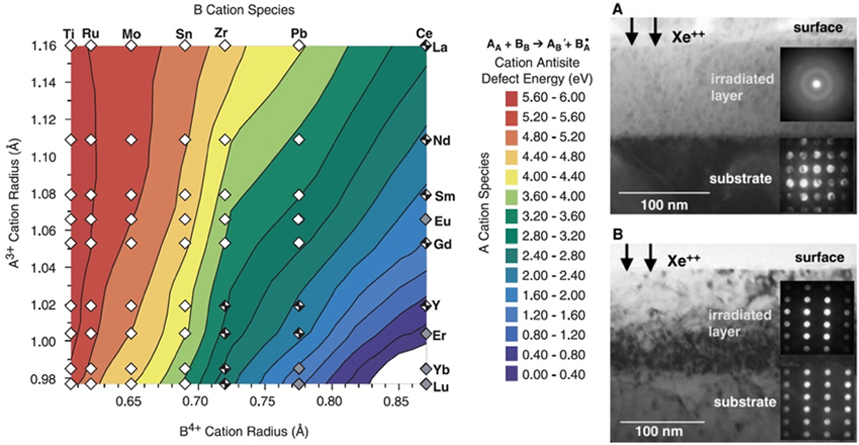Research
We are conducting the following researches using transmission electron microscopy and computer simulations, to contribute to the material fabrications through structural analysis:
Structures of amorphous materials and their crystallization processes
Amorphous materials are used in various fields such as solar cells, gate insulating films for semiconductor devices, and high-performance motors. In addition, crystallization from amorphous is a possible way to realize microstructures that cannot be obtained by conventional heat treatments. To control the material properties and processing technologies, it is necessary to obtain information on the amorphous structures and their changes associated with crystallization. However, structural analysis of amorphous materials is difficult, because of a lack of atomic ordering. We are conducting structural analysis of various amorphous materials using “electron beam radial distribution analysis” and molecular-dynamics simulations.

Atomistic structures of phase change recording media utilized in DVD-RAM and CD-RW (J. Appl. Phys. 95, 8130 (2004): 98, 034506 (2005): 107, 103507 (2010)).
Interaction between irradiation field and materials and its application to material synthesis
Since structural materials used in the nuclear industry are often exposed under harsh radiation environments that induce atomic displacement in materials, knowledge of radiation-induced structural changes is of technological importance to predict performance and lifetimes of materials and to avoid serious accident. Energetic particles are also used for realizing atomic configurations far from the equilibrium state, which is useful for synthesizing new functional materials. We are investigating structural changes of materials under radiation environment at the atomic level. Based on the findings, we are developing irradiation-resistant materials and new functional materials.

Stability of complex oxides under radiation environments (collaboration with Los Alamos National Laboratory: Science 289, 748 (2000)).
Structural characterization of new functional materials
Since low-dimensional nanostructures, such as quantum dots, nanowires, and quantum wells, exhibit unique physical properties that are different from those of bulk structures, much effort has been devoted to construct nanostructured materials. Introduction of nanostructures into conventional materials can also improve the materials properties. To realize novel functional materials, knowledge of atomistic structures is required. To clarify the relationships between structures and functionalities, we are collaborating with domestic and international material fabrication groups.

Structural analysis of oxide superconductors including nanorods (collaboration with Energy and Environmental Materials Laboratory (Matsumoto and Horide Laboratory): Phys. Rev. Mater. 3, 013403 (2019)).

